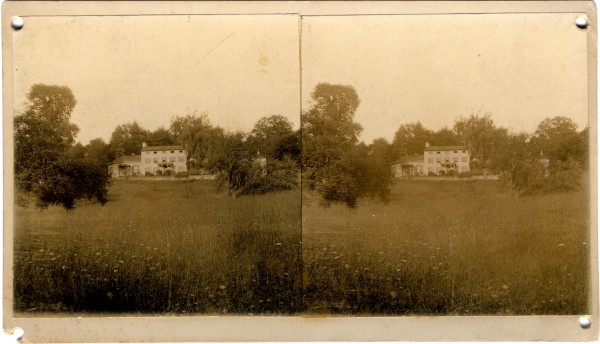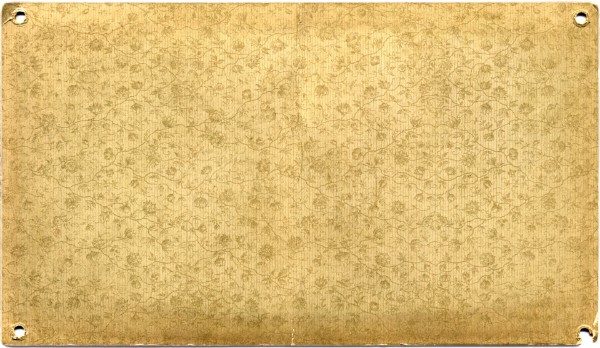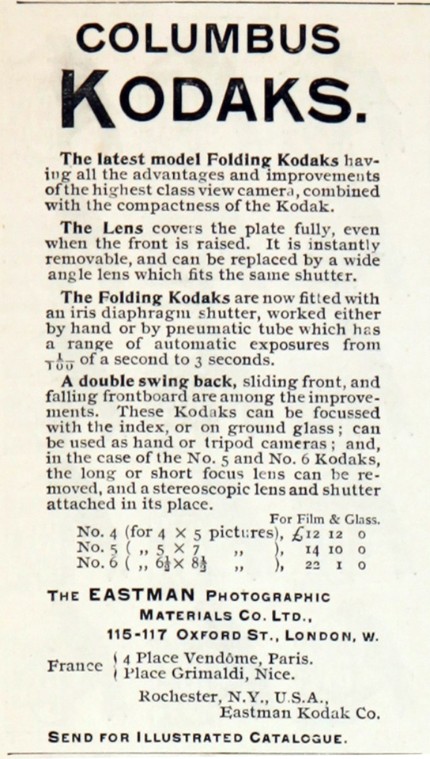No. 6 Folding Kodak Improved (1893)
This camera is the largest roll film camera for normal photography ever produced.
Picture size is 6.5 x 8.5 inch (16,3 x 21,3 cm)
- It was introduced in 1893
- and discontinued in 1896.
- According to the Production Order Book only 152 were made, and it is indeed hard to find today.
- The original price was a round $ 100.
For this amount the photographer got a camera that was loaded with a 24 exposure rollfilm in an Eastman-Walker rollholder (but the camera is able to take a 48 exposure roll).The rollholder can be replaced with plateholders and ground glass. The back panel is a door that can be opened, which permits focussing on the ground glass.
The top can be opened to get to the rollfilmholder or plateholders, and also to the double swing back.
The lens panel has rising and sliding movement and can be exchanged for a stereo lens panel. The front part of the baseboard is hinged, so that it can be dropped if the stereo lenses or a wide angle lens is used.
It will be clear from this description that the No. 6 Folding Kodak Improved was no camera for the snapshooter. It was intended for use by professionals or serious amateurs.
On January 4, 1890 Eastman ordered two No. 6 Folding Kodaks at the camera factory. What happened to these I don't know. It took until March 7, 1893 before the next batch of 50 camera's were ordered.
According to a Kodak chronology the No. 6 Folding Kodak was discontinued in 1895, but 1896 was the last year for the No. 6 Glass Plate Folding Kodak (the same camera but without roll-holder).
Below you see a stereoview from a small series that I have in my collection. The back of the mounts show the floral design of early 1890's Kodak mounts, so I believe these photos were taken with a stereo version of a satchel Kodak. The combined photos are 17.5 centimeter wide, which is just a bit too wide for the No. 5 Folding Kodak Improved. Therefore I believe these views were taken with a No. 6 Folding Kodak Improved.
The views are not perfectly mounted, which is necessary for stereo photographs, indicating that it was done by an amateur.

|
| 
|
Ad from Westminster Budget of September 29, 1893. The price of the No. 6 was a hefty £ 22.50. Around this period the average UK factory worker earned £ 55 per year. 
|